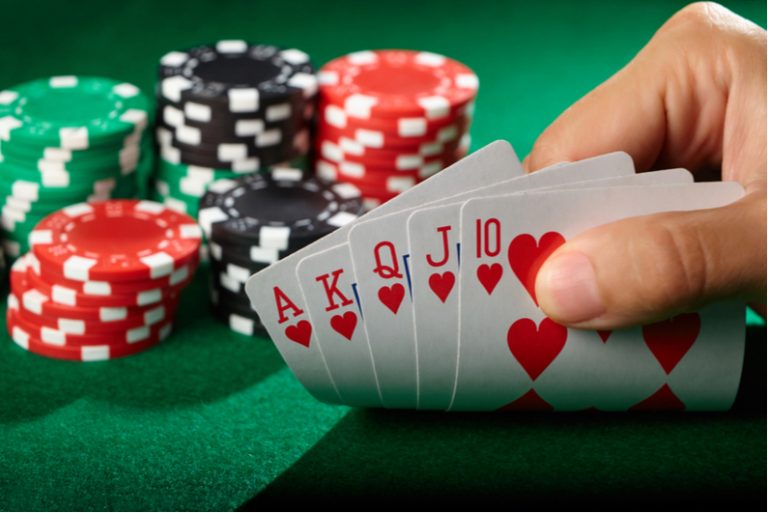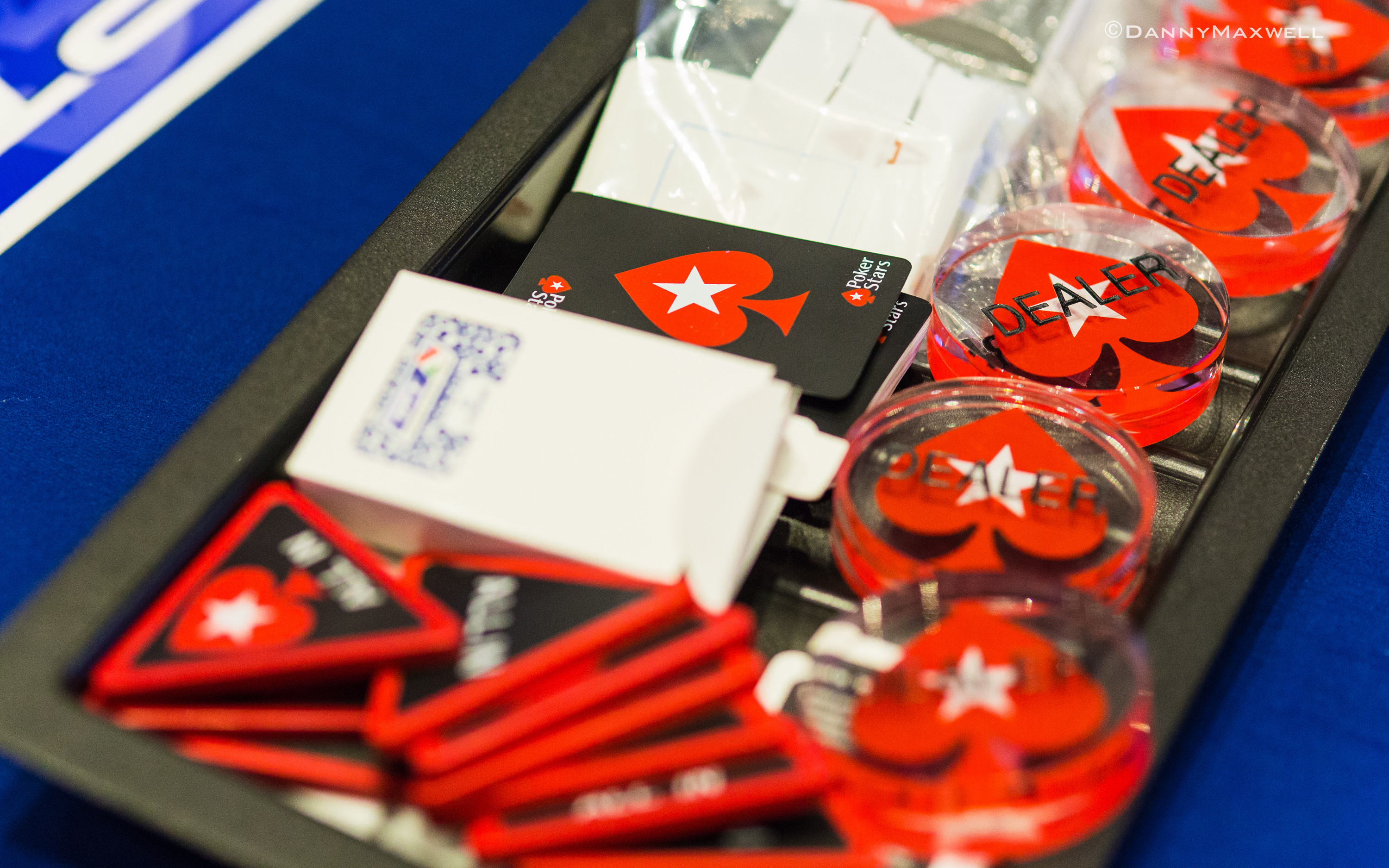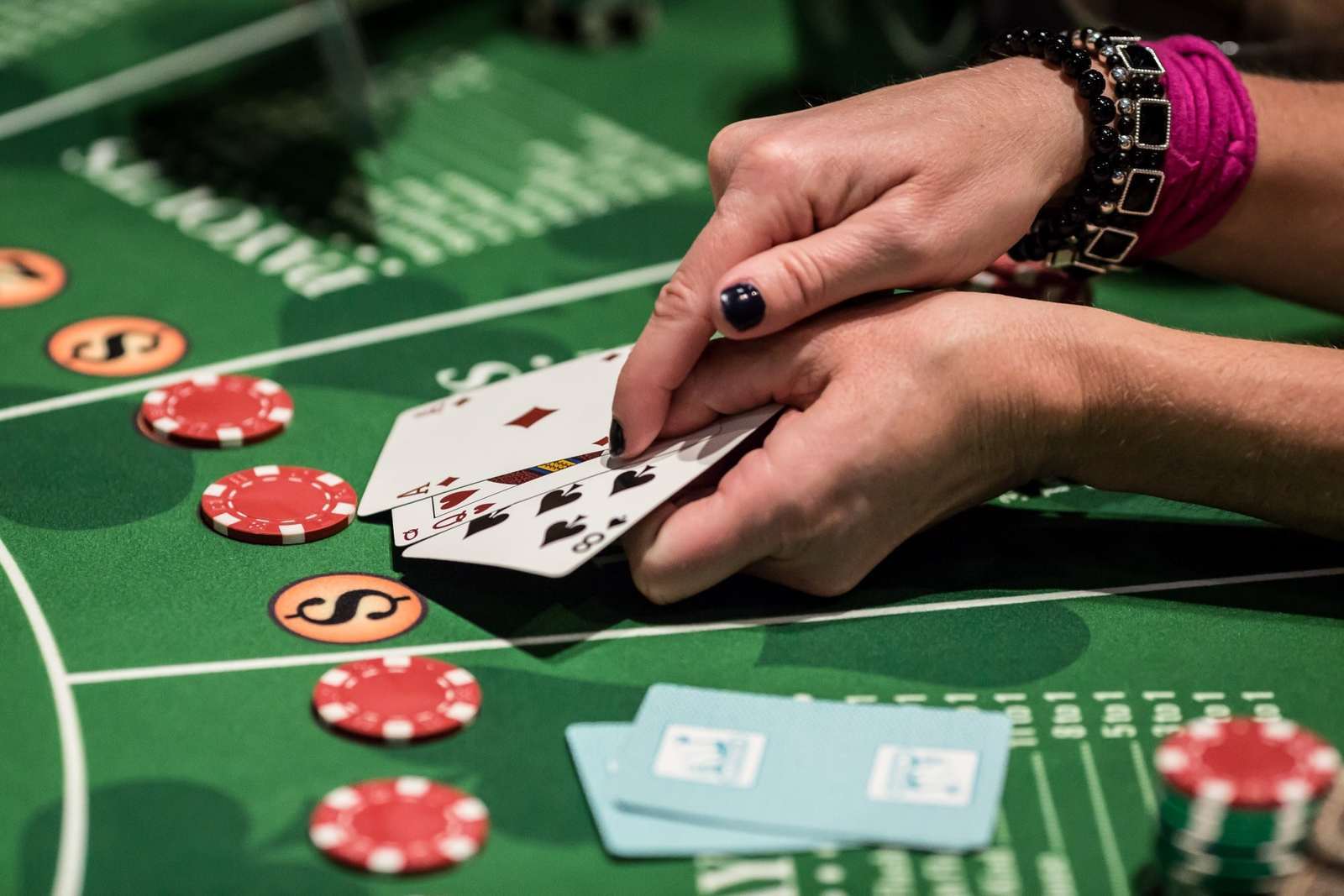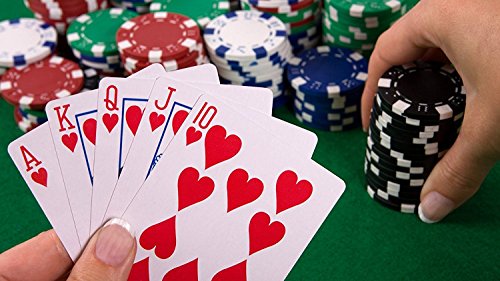Introduction
How To Play Pai Gow Poker In Vegas: If you’re a fan of both poker and traditional Chinese gambling games, Pai Gow Poker is the perfect blend of both worlds. Developed in the 1980s, Pai Gow Poker quickly gained popularity in Las Vegas casinos and has since become a staple of the gambling scene. This intriguing game offers an exciting and unique twist on traditional poker, combining elements of skill, strategy, and chance.
In Pai Gow Poker, you’ll be playing against the dealer rather than other players, adding an intriguing dynamic to the gameplay. The goal is to create two separate poker hands from a seven-card hand, which consists of a five-card hand (the high hand) and a two-card hand (the low hand). Your objective is to beat both of the dealer’s hands to win the round.
Before diving into the intricacies of the game, it’s important to understand the basic rules. In this guide, we’ll walk you through the essential gameplay elements, betting options, hand rankings, and strategies to give you a solid foundation for enjoying Pai Gow Poker in Las Vegas.
You’re a seasoned poker player or a novice gambler looking for a fresh challenge, mastering Pai Gow Poker can provide hours of entertainment and potentially lucrative wins. So, let’s delve into the exciting world of Pai Gow Poker and discover how you can try your luck and skill in the iconic casinos of Las Vegas.

What are the rules for Pai Gow Poker?
The object of Pai Gow Poker is for each Player to arrange their cards into two hands in such a way that they both rank higher than the Banker’s two hands. The five-card hand must rank higher than the Banker’s five-card hand, and the two-card hand must rank higher than the Banker’s two-card hand.
Pai Gow Poker is a captivating casino game that combines elements of traditional Chinese dominoes and Western poker. The game is played with a standard deck of 52 cards plus one Joker. The goal is to create two separate poker hands, one five-card hand (high hand) and one two-card hand (low hand), that are stronger than the dealer’s corresponding hands.
The hand rankings in Pai Gow Poker follow the standard poker hierarchy, with a few exceptions. The Ace, 2, 3, 4, and 5 can be used to form a five-card straight called the “wheel” or “A-2-3-4-5 straight.” The Joker can act as an Ace or complete a straight or flush.
When setting your hands, the five-card hand must have a higher poker value than the two-card hand. If both of your hands beat the dealer’s respective hands, you win the round. If only one hand wins while the other loses, it’s a push, and if both of your hands are weaker than the dealer’s, you lose the bet.
It’s important to note that there are specific rules, known as the “house way,” that determine how the dealer sets their hands. Understanding these rules can give you insight into the dealer’s strategies and help you make informed decisions.
Do they have pai gow in Vegas?
Las Vegas Pai Gow Poker is a playing-card variation of the traditional Pai Gow Chinese gambling game (which is played using dominoes). Players create two poker hands—a five-card hand and a two-card hand—out of the seven cards each is dealt, with the ultimate goal of defeating the dealer’s two corresponding hands. Pai Gow Poker is a popular casino game found in many Las Vegas casinos. Las Vegas is known for its vast array of gambling options, and Pai Gow Poker is among the diverse selection of games available to players.
You can typically find Pai Gow Poker tables in both large resorts on the Las Vegas Strip and smaller off-Strip casinos. These tables cater to players of various skill levels and bankrolls, making it accessible to both casual gamblers and high rollers.
Las Vegas offers a vibrant and exciting atmosphere for playing Pai Gow Poker, with professional dealers and well-maintained gaming areas. Whether you’re a novice or an experienced player, you’ll have the opportunity to enjoy the thrill of this unique and strategic game in the heart of the renowned Las Vegas casino scene. So, if you’re planning a trip to Las Vegas and want to try your hand at Pai Gow Poker, you’ll find numerous casinos that offer this captivating game, allowing you to experience the excitement and potential rewards it has to offer.
What are the odds of Pai Gow Poker in Las Vegas?
Pai Gow Poker has a standard house edge of 2.84%. There is however a way to lower that edge to around 1.42%. The odds of Pai Gow Poker in Las Vegas can vary depending on several factors, including the specific casino and its house rules. However, the game generally offers favourable odds to players when compared to other casino games.
In Pai Gow Poker, players are dealt seven cards and must create two poker hands: a five-card hand and a two-card hand. The objective is to beat both the dealer’s hands. The house edge in this game is typically around 2.5%, making it one of the lowest among casino games.
It’s important to note that the odds can be influenced by the player’s strategy and decisions during gameplay. Proper strategy, such as setting the two-card hand according to specific rules, can further improve the player’s chances of winning.
Is Pai Gow hard to learn?
Pai Gow Poker utilises a 53-card deck which features the standard 52 cards used in most poker games along with one joker. The game is easier to master than most forms of poker as there is no bluffing involved as betting only takes place before any cards are dealt.
Pai Gow Poker is considered to be a relatively easy game to learn compared to some other casino card games. While it may have a few complexities, it is straightforward to grasp the basic rules and get started.
The game’s objective is to create two poker hands from a seven-card combination, following specific rules. Understanding hand rankings and knowing how to divide the cards effectively between the high hand and low hand are key components. Additionally, becoming familiar with the concept of the Joker and its role in completing certain hands is important.
Many casinos and online platforms offer tutorials, practice games, and resources to help players understand Pai Gow Poker better. Taking advantage of these resources can make the learning process even smoother.
While mastering advanced strategies and optimal hand arrangements may take time and practice, the initial learning curve for Pai Gow Poker is relatively gentle. With a bit of patience and some hands-on experience, players can quickly become comfortable with the game and enjoy its unique blend of luck and strategy.

How do you play Pai Gow Poker in Vegas?
To play Pai Gow Poker at one of the many casinos on the Strip, players place their ante bets and the banker deals seven cards to himself and to every seat at the table, including the empty ones. Unlike in traditional no-limit Texas Hold’em, players don’t compete against each other in Pai Gow Poker.
To play Pai Gow Poker in Las Vegas, follow these steps:
- Find a Pai Gow Poker table: Look for a table with a sign indicating “Pai Gow Poker” in the casino.
- Place your bets: After sitting down, place your bet within the table’s minimum and maximum limits.
- Receive seven cards: The dealer will deal seven cards face-down to each player, including themselves.
- Create two hands: Arrange your seven cards into a five-card hand (high hand) and a two-card hand (low hand). The five-card hand must rank higher than the two-card hand.
- Compare with the dealer: The dealer will reveal their own hands and compare them to each player’s hands. To win, both your hands must beat the dealer’s hands. If only one hand wins, it’s a push, and if both hands lose, you lose the bet.
- Payouts: If you win both hands, you receive a 1:1 payout, minus a 5% commission. In case of a tie, neither the player nor the dealer wins or loses.
- Set the house way: If you’re unsure about how to set your hands, you can ask the dealer to set your hand the “house way,” which is the optimal strategy determined by the casino.
What are the rules for Pai Gow Poker?
The object of Pai Gow Poker is for each Player to arrange their cards into two hands in such a way that they both rank higher than the Banker’s two hands. The five-card hand must rank higher than the Banker’s five-card hand, and the two-card hand must rank higher than the Banker’s two-card hand.
Pai Gow Poker is a fascinating casino game that blends elements of traditional Chinese dominoes and American poker. The game is played with a standard deck of 52 cards plus one Joker. The objective is to create two poker hands, one five-card hand (high hand) and one two-card hand (low hand), that are stronger than the dealer’s corresponding hands.
The ranking of the hands follows standard poker rules, with the exception that the Ace, 2, 3, 4, and 5 can be used to form a five-card straight called the “wheel” or “A-2-3-4-5 straight.” The Joker can act as an Ace or complete a straight or flush.
When setting your hands, the five-card hand must be higher in value than the two-card hand. If both of your hands beat the dealer’s hands, you win. If only one hand beats the dealer’s, it’s a push, and if both hands are weaker, you lose.
In Pai Gow Poker, there is a specific set of rules known as the “house way” that the dealer must follow when arranging their own hands. It is essential to familiarise yourself with these rules to understand the dealer’s strategies.
What is the most common poker game in Vegas?
Poker is one of the most common, yet strategic games on the Las Vegas casino floor, and the various types all have different rules. Texas Hold ‘Em is the most popular variation of poker, and has the same hand hierarchy and basic rules as traditional poker, so it’s great for beginners. The most common poker game in Las Vegas is Texas Hold’em. This popular variation of poker has gained tremendous popularity over the years and is widely played in the casinos of Sin City.
Texas Hold’em is known for its simplicity and strategic depth. It is a community card game where players are dealt two private cards, known as “hole cards,” and then five community cards are placed face-up on the table. The objective is to make the best five-card hand using any combination of the hole cards and community cards. Las Vegas offers a diverse range of Texas Hold’em games, catering to players of all skill levels and bankrolls.
From low-stakes games in smaller casinos to high-stakes tournaments in renowned poker rooms, there are options for everyone. Some of the notable poker rooms in Las Vegas include the Bellagio, Aria, Venetian, and the World Series of Poker at the Rio. These venues host numerous Texas Hold’em cash games and tournaments throughout the year, attracting both recreational players and seasoned professionals.
What are the basic rules for playing Pai Gow Poker in Las Vegas?
Pai Gow Poker is a popular casino game in Las Vegas that combines elements of traditional Chinese dominoes and American poker. The basic rules for playing Pai Gow Poker are as follows:
- Pai Gow Poker is played with a standard deck of 52 cards, plus one joker.
- The objective of the game is to create two poker hands: a high hand and a low hand, which must both be stronger than the dealer’s corresponding hands.
- Each player, including the dealer, is dealt seven cards, which must be divided into a five-card high hand and a two-card low hand.
- The high hand must have a higher poker ranking than the low hand. For example, a pair cannot be placed in the low hand if the high hand contains two pairs.
- In Las Vegas, casinos often have specific house rules regarding hand rankings and how ties are resolved, so it’s essential to review the rules before playing.
What is the objective of Pai Gow Poker in Las Vegas?
The objective of Pai Gow Poker in Las Vegas is to create two separate poker hands, one high hand and one low hand, using a seven-card hand dealt to each player. The high hand should be stronger than the low hand and both hands should be stronger than the corresponding hands of the dealer. The goal is to win both hands against the dealer to secure a victory.
In the high hand, traditional poker hand rankings are used to determine the strength of the hand. For example, a royal flush is the strongest hand, followed by a straight flush, four of a kind, and so on. The low hand, on the other hand, follows a simpler ranking system. It consists of pairs and individual cards, and the highest-ranking hand is a pair of aces.
To succeed in Pai Gow Poker, players must carefully arrange their cards to maximise the strength of their hands. A win occurs when both the high hand and the low hand of the player are stronger than the dealer’s corresponding hands. In case only one hand is stronger or both hands are weaker, it results in a push or a loss, respectively.

Conclusion
Playing Pai Gow Poker in Las Vegas can be an enjoyable and potentially rewarding experience. By understanding the basic steps and rules of the game, you can confidently join a Pai Gow Poker table and engage in the action. The game’s objective of creating two poker hands, a five-card hand and a two-card hand, adds a unique twist to traditional poker. Strategically arranging your cards to form the strongest hands is essential for success.
While the specific rules and payouts may vary between casinos, the core gameplay remains consistent. It is advisable to familiarise yourself with the house rules and any specific variations before playing. One key aspect of Pai Gow Poker is the relatively low house edge, typically around 2.5%. This means that players have a better chance of winning compared to many other casino games. It’s crucial to employ sound strategy and make informed decisions to maximise your odds of success.
Whether you’re a novice or an experienced player, Pai Gow Poker offers an opportunity for entertainment and potential profits. Take your time to learn the game, understand the rules, and consider seeking advice from the dealer when needed. With a bit of practice and strategy, you can immerse yourself in the thrilling world of Pai Gow Poker in Las Vegas.















/86544781-56a741e83df78cf77293bdc3.jpg)




















